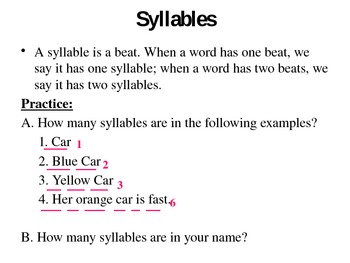

On the other hand the endings of Latin words provide us with a large collection of easily learned quantities: with a review of the basic declensions and conjugations it is not difficult to learn that the o of amō is long, and that the i and of trādit is short, or that the ō and īs of puerō and puerīs are long, or the first ī of mīlitibus is long while the second and third i’s are short. In such cases it is almost impossible to scan the line without also establishing its sense. Much more common are the words whose form is identified only by their quantity: amīcitia can be nominative singular or ablative singular, cīvis can be nominative or genitive singular or accusative plural, and manus can be nominative singular or nominative or accusative plural, etc.

Latin has a number of virtual homonyms, distinguished only by their quantity, such as lěvis ("light") and lēvis ("smooth"). Ideally we would all know, say, that the first syllable of miles was long and the second one short, but in practice we are often uncertain, or even wrong, and it sometimes necessary to consult a dictionary solely to ascertain the quantities of a word.Īn additional problem is that it is often necessary to know the meaning of a Latin word before one can know its prosody. All diphthongs are normally long by nature, but individual vowels can be either long or short, though a vowel followed by another vowel not in a diphthong is normally short. Whereas English meters are based on a word's accent ("Múch have I trávelled in the reálms of góld”), Latin meters are based on quantity what matters most is whether syllables are long or short.įor most of us the obstacle to reading Latin verse aloud is that we have not learned the quantities of Latin very well. Raven, Latin Metre: an Introduction (Cambridge, 1965). Since the Amores may well be among the first Latin poems a student encounters, it may be helpful to provide a brief introduction to the rules of Latin prosody (the quantity of individual syllables) and to the reading aloud of elegiac couplets. All the exercises are included as a separate Student Book for convenient printing.Prosody | Eli sion | The Elegiac Couplet | Reading Aloud It can also be used to introduce the upper Form student to this important skill as well.

#SCANSION POETRY MANUAL#
The manual can be implemented over the course of a school year for a Form III student, which is when CM students would first be expected to recognize and write lines that would scan, however some students may need more time and others less. These exercises are made up of lines from Classic works of Poetry as well as original lines from the author, and show the range of metered verse. As scansion is not often taught now, this manual starts from the beginning, outlining the concepts and definitions of terms like meter and poetic feet, before moving into exercises. In this lesson manual, teacher Jonathan Kiser walks students and teachers through the scansion process. To best learn and apply the writing styles of poets from George Herbert to Paul Laurence Dunbar, the ability to scan verse is of great value. Many of the master poets that students will read and be called to emulate in Miss Mason’s method wrote, or still write in some cases, in metered verse and apply the principles of scansion to their lines. However, the ability for students to scan lines of verse, and then produce lines of original verse that will scan, was of great importance to Charlotte Mason. Verse scansion is a craft that is unknown to many and unheard of by just as many.


 0 kommentar(er)
0 kommentar(er)
